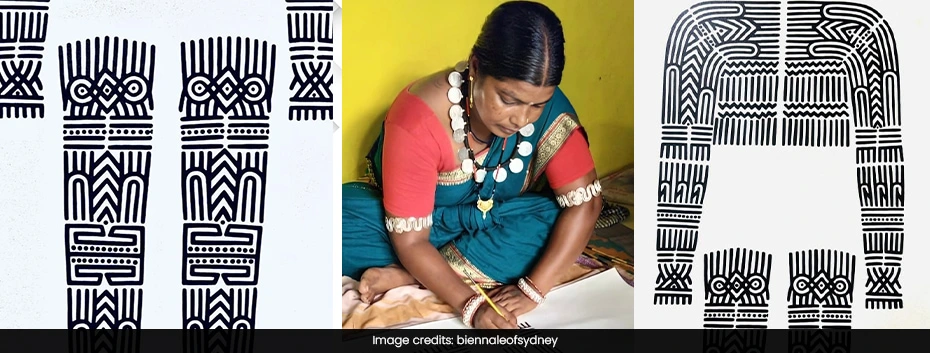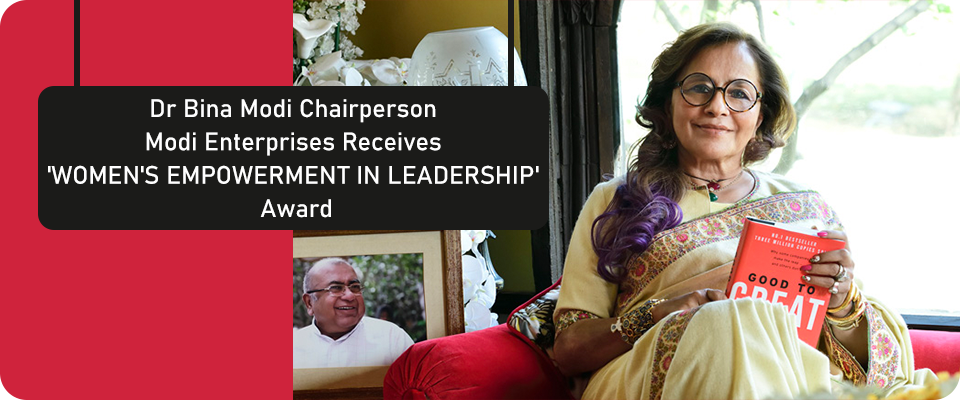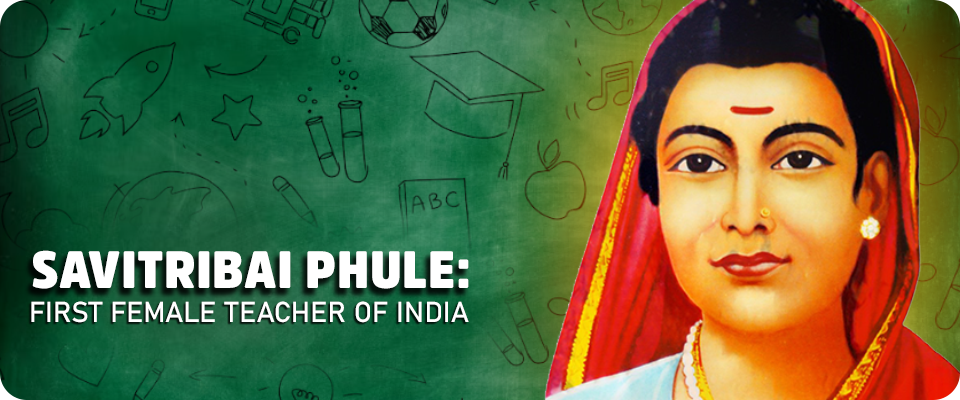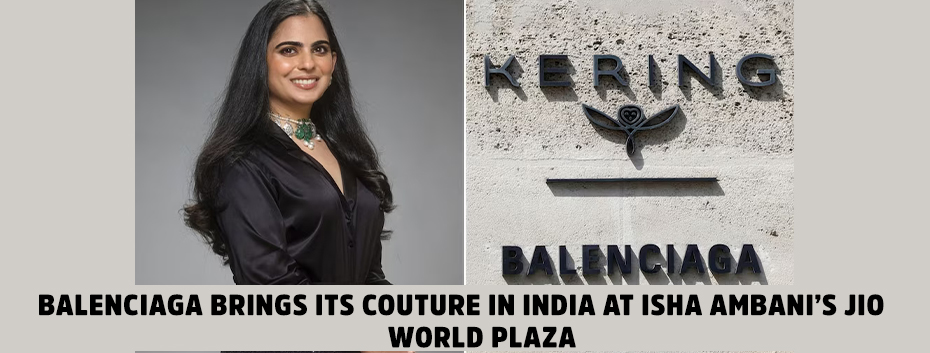![]() English
English
News
Mangala Bai Maravi: Lady Who Elevates Tribal Tattoo to Art on Global Stage

Mangala Bai is a tribal woman from Madhya Pradesh trying to preserve the traditional art form from dying. She uses a traditional process to make kajal at home and uses bamboo thorns to pierce the design into the skin. She started this journey when she was only seven.
India is a land of varieties and diversities. Among them are the various tribes carrying their own culture, beliefs, languages, and traditions. Most of these tribes continue to follow a lifestyle that their ancestors followed and preached to them, while the rest communities have accepted the modern lifestyle, advanced machines, and new sources of employment. In the midst of all this is a woman hailing from Madhya Pradesh striving hard to preserve the traditional tribal art of tattoo designing. She is putting in her efforts to protect the art that is gradually losing its presence in today’s fast-paced world.
Mangala Bai says that the traditional art belonging to the Baiga and the Gond communities to design tattoos has existed for a long back, even before the establishment of advanced technologies, automobiles, or skyscrapers which were familiar to mankind. She stated that her forefather and their forefathers and their early ancestors during the ancient times when there was no cemented house or proper clothing for living, her ancestors used to design tattoos for people belonging to other communities.
Mangala and her father, both possess experience in using and handling a machine to ink tattoos, however, Mangala still prefers the age-old method of using kajal to craft the design and ram bans ka kanta (Bamboo thorn) to pierce the skin and make it permanent.
Mangala Bai always opts for natural things as she does not like to make use of chemicals. Even the kajal is homemade. To make it, she uses kala til (black sesame seeds) to prepare it. The black sesame seeds are finely roasted first and then crushed them. To this, she pours a small amount of sesame oil and burns it in a clay pot. The black residue formed after burning is collected which serves as organic kajal, which becomes permanent on the skin when the thorns pierce into it.
In the old times, the Baiga community was known as Nana Baigans. Nana Baigans are the people who used to serve the earth and its natural elements like soil, water, and trees.
According to the mythology, the Leader of the Baiga community, in order to impress Lord Indra, the God of Rain and Thunder, got his entire body inked to impress the Lord. The tales state that since the king did not have things unlike the rich people, people around him suggested getting his body tattooed. This is how the art of tattooing on the body started in the Baiga community.
At the tender age of seven, Mangala Bai started designing tattoos. She learnt the methods by watching her parents. Her mother and father used to craft designs on the body, and Mangala used to carve the same using the thorn of Bamboo.
When Mangala Bai was a little girl, she could not stand and design tattoos at the same time, given her height did not allow her to do it efficiently. “I used to stand on a chair and carve the tattoo,” she added with a chuckle.
Both of these communities have certain traditions of getting inked at various stages of life. For example, people of the Gond community get newborns carved with three small dots. In Baigas, girls at the age of nine get tattoos on their bodies. At the age of 12, they get their backs inked, at 13, their legs get tattooed, and after marriage or having a baby, they get their chests tattooed. This way, they get their entire body inked over time, except for their abdomens.
Mangala Bai has three siblings all the siblings are married except for Mangala Bai because she chose to opt out of marriage when her mother became sick. She headed the family business and now she goes from village to village, and city to city to design tattoos when a client asks for her assistance. Mangala Bai is not educated, but she does know the value of traditional art that is fading. Hence, Mangala has been doing what she can to preserve the culture and art for as long as she can.
Despite knowing how to use a machine, Mangala Bai claims that she can carve intricate as well as broad designs using the traditional process. “I want to promote the art, therefore, I do not use a machine for work.”
Despite being confident in her skills as a tattoo artist when she was a kid, Mangala Bai got a bit anxious when offered to be a resident at the University of Sydney. Expressing her thoughts, she said, “I am used to working on small canvases. Here, I am working on a fifteen-foot-long canvas. It’s the only time I’ve ever been nervous about my art. I didn’t know what the people here would be like. When I travel to India, I know that at least someone will be able to speak Hindi or understand what I’m saying. I was worried I wouldn’t have that here and because my mobile network wouldn’t work, I won’t be able to call anyone back home. I wouldn’t have come with anyone else except Amit bhai.”
Amit Arjel-Sharma is Mangala Bai’s assistant who she has known for 10 years now. Amit began his tattooing journey in the year 2014 and when he was learning modern tattooing, he quickly found himself disillusioned by the landscape which was vast but arid. He said that although modern tattoos may look beautiful in designs, traditional tattoos hold deeper meanings which hold connections with your roots and ancestors. In 2015, he got an opportunity to work under Mangala Bai through Mangala Bai’s mother. From there, he learned everything related to the Baiga culture.
As a part of her residency program at the University of Sydney, Mangala Bai Maravi’s works are displayed at the Biennale of Sydney, which will be hosted at the University’s Chau Chak Wing Museum. There are two paintings in this series: the first one is the frontal tattoos of the Baiga women and the next one is the ones carved on the back. Both paintings are inked on fifteen-foot-long canvases. By offering a contemporary perspective to the age-old Baiga tradition, Mangala Bai Maravi along with her assistant Sharma hopes to help preserve and revive her cultural heritage.




